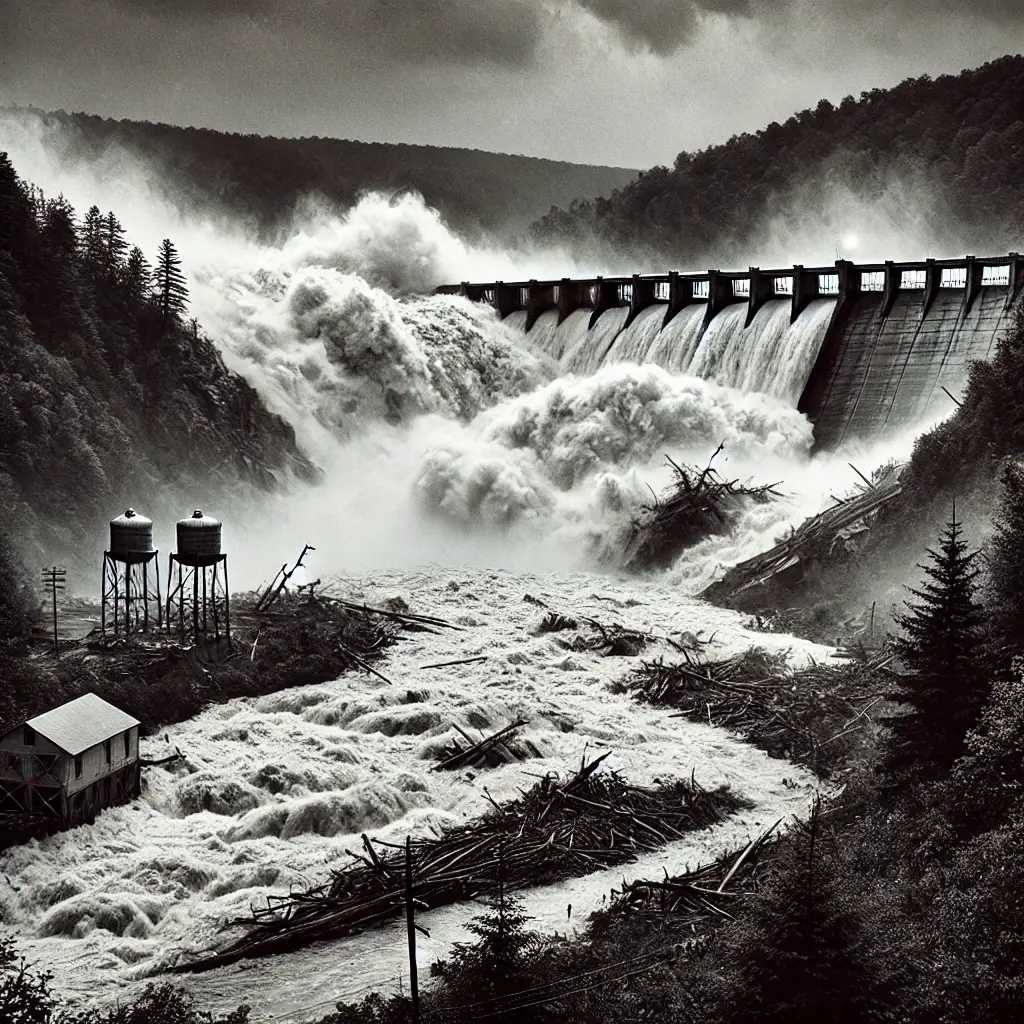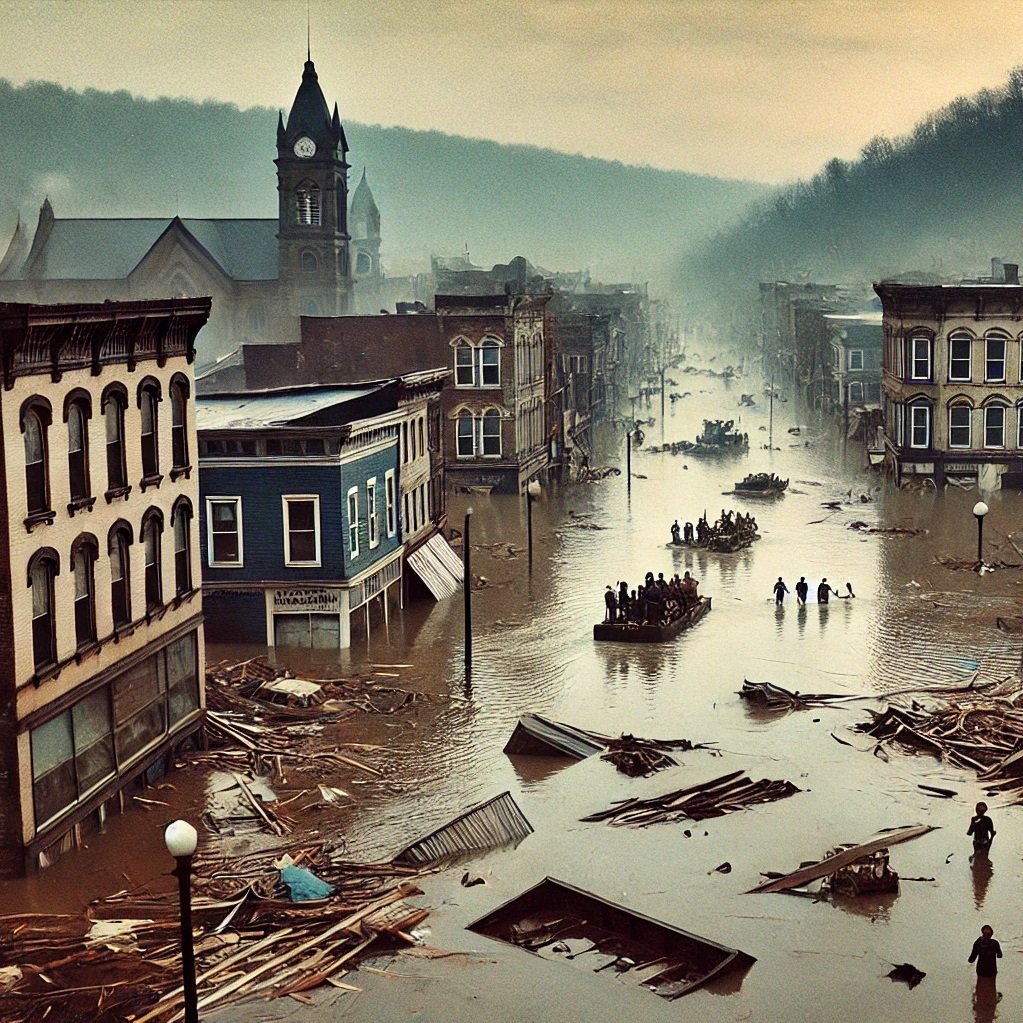On the same date in 1977, the city of Johnstown, Pennsylvania, experienced a devastating flood when an intense storm led to the failure of the Laurel Run Dam and other local flash flooding. Known as the second major flood to hit the area since 1889, this disaster resulted in the deaths of 84 people and extensive damage to the community. The 1977 flood highlighted ongoing issues with flood management and urban planning in regions prone to such natural disasters.
Johnstown, nestled in a valley at the confluence of the Little Conemaugh River and Stonycreek River, has a long history of flooding due to its geographic location. The city had already faced a catastrophic flood in 1889, which claimed over 2,200 lives when the South Fork Dam failed. This tragic event left an indelible mark on the community and highlighted the need for improved infrastructure and flood control measures.

The 1977 flood was precipitated by an intense weather system that brought heavy rainfall to the area. Over 11 inches of rain fell in a 24-hour period, overwhelming the region’s waterways and infrastructure. The Laurel Run Dam, located upstream from Johnstown, was unable to contain the deluge and eventually failed, releasing a torrent of water downstream.
As the floodwaters surged into Johnstown, they caused widespread destruction. Homes, businesses, and infrastructure were swept away or severely damaged. The floodwaters reached heights of up to 10 feet in some areas, trapping residents and causing chaos throughout the city. Emergency services were overwhelmed, and rescue operations were hampered by the sheer scale of the disaster.
The failure of the Laurel Run Dam was a significant factor in the extent of the devastation. Built in the early 1900s, the dam was not designed to withstand such extreme weather conditions. Its failure underscored the importance of maintaining and upgrading aging infrastructure to prevent similar disasters in the future. The collapse of the dam released millions of gallons of water, which cascaded down the valley and into Johnstown, exacerbating the flood’s impact.
In addition to the Laurel Run Dam, other smaller dams and levees in the region were also breached or overtopped by the floodwaters. The combination of these failures created a cascade effect, with each breach contributing to the growing flood. The rapid rise of the rivers caught many residents off guard, leaving them with little time to evacuate or prepare.
The human toll of the 1977 flood was profound. Eighty-four people lost their lives, and many more were injured or displaced. The loss of life and property had a lasting impact on the community, with families and businesses struggling to recover in the aftermath. The flood also highlighted the need for better emergency preparedness and response mechanisms in flood-prone areas.

In the wake of the disaster, the community rallied to support those affected. Relief efforts were organized at both the local and national levels, with volunteers and aid organizations providing essential supplies and assistance. The rebuilding process was long and arduous, but the resilience and determination of the Johnstown residents shone through as they worked to restore their city.
The 1977 flood prompted a reevaluation of flood management practices and policies in Johnstown and similar regions. Urban planning and development strategies were scrutinized to ensure that future growth would not exacerbate flood risks. This included measures such as improved zoning regulations, enhanced floodplain management, and the construction of new and stronger flood control structures.
The disaster also led to changes in dam safety regulations and oversight. The failure of the Laurel Run Dam, along with other dam failures during the flood, highlighted the need for stricter safety standards and regular inspections. State and federal agencies implemented new guidelines to ensure that dams were properly maintained and capable of withstanding extreme weather events.
One of the lasting legacies of the 1977 flood is the increased awareness of the importance of disaster preparedness and resilience. Communities across the United States have taken lessons from Johnstown’s experience to improve their own flood management and emergency response capabilities. This includes investing in early warning systems, enhancing public awareness campaigns, and conducting regular disaster drills.
The flood also had a lasting impact on the field of hydrology and floodplain management. Researchers and engineers studied the event to better understand the dynamics of floodwaters and the factors contributing to dam failures. This knowledge has informed the design and construction of more resilient infrastructure and flood mitigation strategies.
In the years following the 1977 flood, Johnstown has continued to invest in flood protection measures. The city has constructed new levees, improved drainage systems, and implemented advanced flood forecasting technologies. These efforts have significantly reduced the risk of future flooding and increased the community’s ability to respond effectively when disasters strike.

The 1977 flood remains a pivotal moment in Johnstown’s history, serving as a reminder of both the power of nature and the resilience of the human spirit. The community’s response to the disaster and its ongoing efforts to improve flood management exemplify the importance of preparedness, adaptation, and collective action in the face of natural hazards.
Today, Johnstown honors the memory of those lost in the 1977 flood through memorials and educational programs. These initiatives aim to keep the lessons of the disaster alive and ensure that future generations understand the importance of flood awareness and preparedness. The story of Johnstown’s recovery and resilience continues to inspire communities around the world as they navigate their own challenges with natural disasters.
